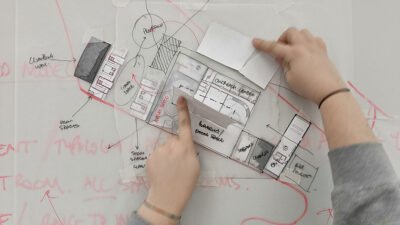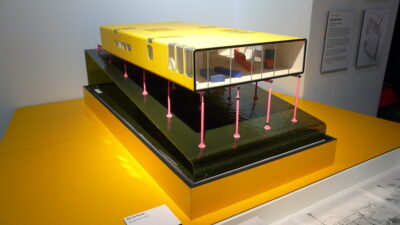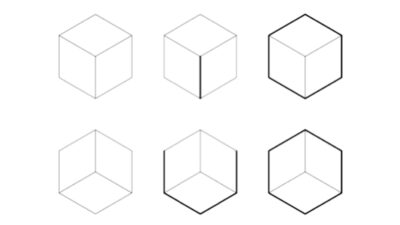The inclusion of communications architecture in architectural education marks a significant step towards understanding the vital role of visual and verbal communication in design. Students are introduced to a range of symbolic and graphical techniques essential for articulating architectural ideas. The course, irrespective of its title, aims to equip students with the capability to convey complex architectural concepts through various mediums, addressing both experienced and novice designers. It covers a spectrum of skills from basic hand drawing to advanced digital representation, ensuring that all students, regardless of their background, gain a thorough grounding in essential communication methods.
Overview of Architectural Communication Tools and Techniques
Students learn various tools and techniques for architectural communication, including:
- Collage: Utilized for conceptual exploration in early design stages;
- Drawing Types: The cornerstone of architectural representation, encompassing sketches, diagrams, 2D and 3D drawings;
- Model Making: Physical models for testing and presenting design ideas;
- Digital Tools: CAD software for precise drawings and 3D modeling programs for spatial visualization.
Implementing Communication Skills in Architectural Projects
The implementation of communication skills in architectural projects is multifaceted, involving the strategic use of various representation methods to express design ideas effectively. Students learn to choose the right tool for each stage of the design process, whether it’s a rough sketch to explore spatial relationships or a detailed 3D model for client presentations. The ability to shift seamlessly between different modes of representation is emphasized, as it enhances the design process and facilitates clear communication with all parties involved. Moreover, these communication skills are not just about representation; they also encompass the ability to articulate design concepts verbally and in writing, which is equally crucial in professional practice.
Comparative Analysis of Communication Methods in Architecture
| Communication Method | Use in Architecture | Tools Used |
|---|---|---|
| Collage | Conceptual exploration | Mixed media |
| Sketching | Idea development | Pencil, pen, paper |
| CAD Drawing | Precise representation | AutoCAD, Revit |
| 3D Modeling | Spatial visualization | Sketchup, Rhino |
Developing Effective Communication Strategies in Architecture
Developing effective communication strategies in architecture involves more than mastering various tools and techniques; it requires an understanding of how to best convey architectural concepts to different audiences. This section focuses on the development of these strategies, guiding students on how to tailor their communication approach based on the project phase and audience. It covers topics like the importance of storytelling in architecture, the role of visual aids in presentations, and strategies for effective collaboration with clients and team members.
Addressing Common Challenges in Architectural Communication
Architectural communication often presents challenges, ranging from technical difficulties with software to the broader issue of effectively conveying complex designs. This section discusses common challenges that students might face and provides practical solutions and tips. It emphasizes the importance of continuous learning and adaptation to new tools and methods in the ever-evolving field of architecture.
The Future of Communications Architecture in Architectural Education
Looking ahead, the field of communications architecture in education is set to evolve with advancements in technology and shifts in architectural practice. This section explores potential future trends and developments, such as the integration of virtual reality and augmented reality in architectural representation and the increasing importance of sustainable design communication. It highlights how these future developments will impact the way architectural ideas are communicated and understood.
Integrating Crontab Scheduling in Architectural Communication
In the realm of architectural communication, the integration of Crontab scheduling, a time-based job scheduler in Unix-like operating systems, offers a novel approach to managing and automating various tasks. This section delves into how Crontab can be used by architecture students and professionals to streamline their workflow. For instance, it can be programmed to automate routine tasks such as updating digital models, rendering high-quality visuals, or backing up project files at regular intervals.
Crontab’s ability to schedule and execute tasks without manual intervention ensures that repetitive, yet essential, tasks are not overlooked in the busy schedule of an architectural designer. Furthermore, Crontab can be employed to send automated reminders for project deadlines or submission dates, facilitating better time management. This integration highlights the convergence of architectural design and information technology, showcasing how traditional design processes can be enhanced through the adoption of advanced technological tools.
Ethical Considerations in Architectural Communication
Ethical considerations in architectural communication are paramount, as the way architects represent and share their designs can have significant implications. This section addresses the ethical responsibilities of architects in representing their work truthfully and accurately, especially when communicating with clients, the public, or regulatory bodies. It explores issues such as the temptation to digitally enhance renderings in a way that might mislead stakeholders about the practical realities of a project. It also covers the responsible use of intellectual property, including respecting the rights and credits of other designers and sources when creating presentations or collages.
Additionally, this part emphasizes the importance of considering cultural and social implications when conveying architectural ideas, ensuring that representations are sensitive to diverse audiences and contexts. By fostering an understanding of these ethical concerns, this section aims to guide future architects in maintaining integrity and professionalism in all aspects of their communication.
Conclusion
In conclusion, communications architecture plays a pivotal role in architectural education, bridging the gap between abstract design concepts and their tangible realization. This overview has underscored the importance of diverse communication methods and the need for effective strategies to meet the challenges of modern architectural practice.











